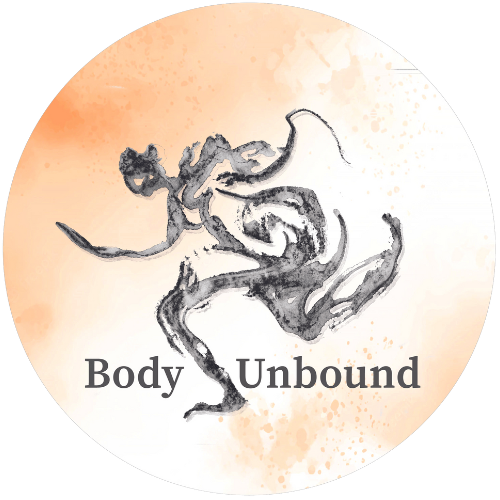What exactly is fascial counterstrain and how does it work?
Fascial counterstrain was developed as a more expansive form of counterstrain itself, a practice that was created and popularized by Dr. Jones. In the 1980s, Brian Tuckey, physical therapist and the founder and developer of fascial counterstrain, began to apply the counterstrain approach for musculoskeletal pain to other structures of the body, initially to the viscera. Since that time, Tuckey and his close colleagues have found that these techniques have value and effectiveness for all tissues of the body.
Though the body tightens routinely and reflexively, relaxation does not happen in any parallel automatic reflex. Relaxation occurs when the body feels safe, supported, and restored. For all of us, such states might be reached multiple times a day. But there are some areas that may tighten and not re-establish a relaxed state. This could be because of an injury that required prolonged tightening; because of some other trigger that keeps firing (as in anxiety or PTSD); or due to some other stressors that the body is experiencing, either within or outside of our consciousness.
What is Fascia?
Fascia envelopes all structures of the body. Thus we find fascia surrounding muscles and bones, but also covering arteries and veins, lymphatics, nerves, viscera, the brain, fat tissue, etc. This tissue is easily recognized by all who eat meat: it is the thin, tough, clear to white colored tissue covering all muscles and bones.
Fascia has tiny muscle fibers (myofibers) that allow the tissue to tighten or contract. This contraction is a reflex. By tightening automatically, fascia has the ability to protect underlying organs or systems. We all know this response when we feel our body tighten in reaction to a real, imagined, or remembered threat.
When the fascial layer holds a tight and restricted state, the underlying structure cannot function normally. All cells require oxygen and nutrients, and they all need to have carbon dioxide, and waste products (metabolites) removed. When the fascial layer is sealed around an organ, nerve, or artery like shrink wrap, the flow in and out of the area is restricted. The build-up of waste products leads to localized inflammation and edema, further exacerbating pain and dysfunction.
Fascial counterstrain uses anatomic precision to figure out the structures that are under tension and driving the dysfunction. Subtle positioning of the client with slight pressure on the underlying structures brings the fascial envelope together so that the myofibers no longer hold tension. The fascia goes slack, the accumulated swelling and trapped metabolites can be drained, and the whole area resets without pain and restriction.
What should I expect when I come in for a treatment?
Please come 15 minutes early for your first session to make sure your paperwork is complete. Treatment times are 75 minutes.
I will take a short history. We will then test areas of restriction in your body. This will give us the direction we follow.
The practice itself is very gentle and feels relaxing. You will be clothed, but please come wearing loose clothing, preferably without rigid items like belts or underwire bras.
For conditions that have lasted longer than two months, a common treatment plan would be three to five treatments, usually spaced 1-2 weeks apart. However you will get a fair indication of your potential results with this technique during your first session.
If you have a very fresh injury or recent surgery, we can always get benefit from improving the venous drainage and decreasing edema. However, for post surgical patients, we can treat all fascial layers when you are 6 or more weeks post surgery.
Hydration Is Important
After the treatment, please drink a lot of water and expect to finish your day/ night in a relaxed and physically easy way. The release of tensions, and the resultant flushing of metabolites, can feel like a detoxification This means that you could have fatigue, dizziness, a headache, light nausea, etc., for the first 24-48 hours after the treatment. Such reactions are more common when there are big releases, especially when the work centers on the cranial area.
The first session can reveal other underlying areas of dysfunction. Sometimes, the most painful area is really controlled by another area, which needs to be treated as well in order for the condition to clear and not return.
If you experience a new and unpleasant sensation after a treatment, this usually means the body is rebalancing itself. If that does not clear after 1-2 days, please contact me so I can fit you in for another treatment within a few days. If your symptoms are concerning, as always, please take the usual precautions and go to an Urgent Care or an ER as needed.
What has brought you here?
Most people come to fascial counterstrain for one of two reasons.
They might know someone who suggested this treatment to them because that person had benefited so much themselves. Or, they might have limitations in their physical health that other healthcare providers have not sufficiently relieved. These people have often had to change their favorite activities, or even their work, because they just can’t function as they used to. In all cases, our clients are hopeful that they might gain or regain physical strength and vitality.
Below are some of the common conditions that fascial counterstrain can help treat:
· Migraines
· Head concussion (or post-concussion syndrome)
· Neck stiffness
· Shoulder pain
· Chest wall pain
· GERD
· Nausea
· Abdominal bloating
· Constipation
· Sciatica
· Pelvic pain
· Hip pain
· Tightness, numbness, or tingling of your arms or legs
· Back pain
· PTSD


